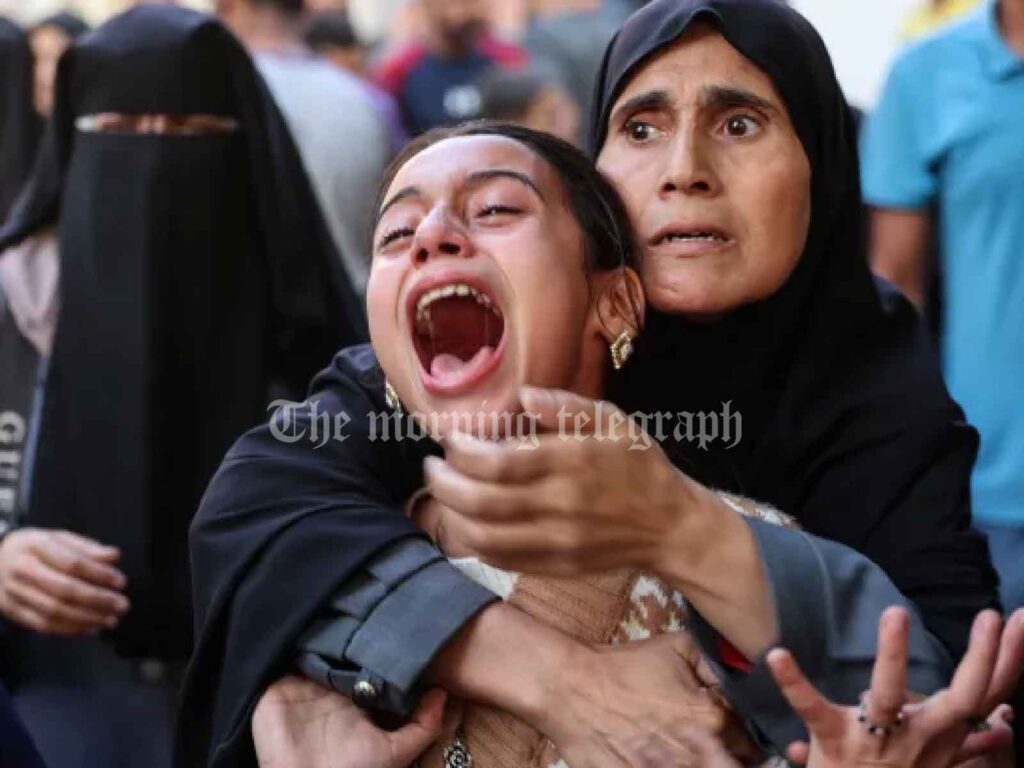
The United Nations has issued a stark warning regarding the ongoing humanitarian crisis in Gaza, revealing that nearly 70% of the fatalities in the conflict are women and children. This grim statistic was unveiled in a detailed report from the UN Human Rights Office (OHCHR), which has found that the majority of deaths are the result of Israeli military operations, constituting a clear violation of international humanitarian law.
The report stated that of the confirmed fatalities, approximately 80% occurred in residential buildings or similar housing, with 44% of the victims being children and 26% being women. The OHCHR further highlighted a disturbing trend: many of the casualties were infants, young children, the elderly, and families killed together in their homes. This pattern suggests that Israeli airstrikes and artillery have disproportionately affected civilians, raising significant concerns over Israel’s adherence to the principles of distinction, proportionality, and precaution in warfare.
Volker Türk, the UN’s High Commissioner for Human Rights, condemned the continued attacks, stating that the overwhelming civilian death toll is “a direct consequence of the failure to comply with fundamental principles of international humanitarian law.” Türk noted that the Israeli military’s tactics have continued “unabated” more than a year into the conflict.
The UN’s children’s agency, UNICEF, provided further alarming details, reporting that at least 64 attacks on schools in Gaza were recorded in October 2024 alone. These attacks resulted in 128 deaths, the majority of whom were children. The situation in northern Gaza is particularly dire, with intensified bombardments and widespread displacement, exacerbating the already severe lack of sufficient aid. UNICEF stated that nearly half of all school-related attacks in October occurred in the north, where the conflict is most intense.
The destruction of education infrastructure has left most schools either partially or fully destroyed, with more than 95% of schools in Gaza affected since the start of the conflict. This destruction has severely impacted the education of children, leaving them vulnerable to further violence and trauma.
Meanwhile, the World Health Organization (WHO) has raised alarms over the growing risk of famine in Gaza, particularly in the northern regions, where the most recent Israeli military operations have been concentrated. According to WHO, famine is likely imminent in these areas, with starvation and malnutrition rates rising rapidly. WHO’s report pointed to a significant decline in food aid entering Gaza, with the average number of aid trucks falling to just 58 per day in late October, compared to the pre-conflict level of around 500 trucks per day.
The price of food in Gaza has skyrocketed by 312% since the start of the conflict, making it increasingly difficult for residents to access basic necessities. Tedros Adhanom Ghebreyesus, WHO’s Director-General, called the situation “deeply alarming” and urged for a swift increase in humanitarian aid. He emphasized the need for safe access to food and medicines, particularly to combat severe malnutrition among Gaza’s children.
Despite international calls for increased aid, Israel has defended its military actions, asserting that Hamas uses civilian infrastructure, including schools and hospitals, as shields for military operations. However, the UN and other humanitarian organizations have repeatedly stressed that the scale of civilian casualties and the destruction of essential infrastructure suggest a disproportionate and indiscriminate use of force.
As the situation continues to worsen, the UN and other aid agencies are calling for immediate international intervention to address the humanitarian crisis and ensure the protection of civilians in Gaza. The ongoing violence and destruction underscore the urgent need for a political solution and greater respect for international law.




